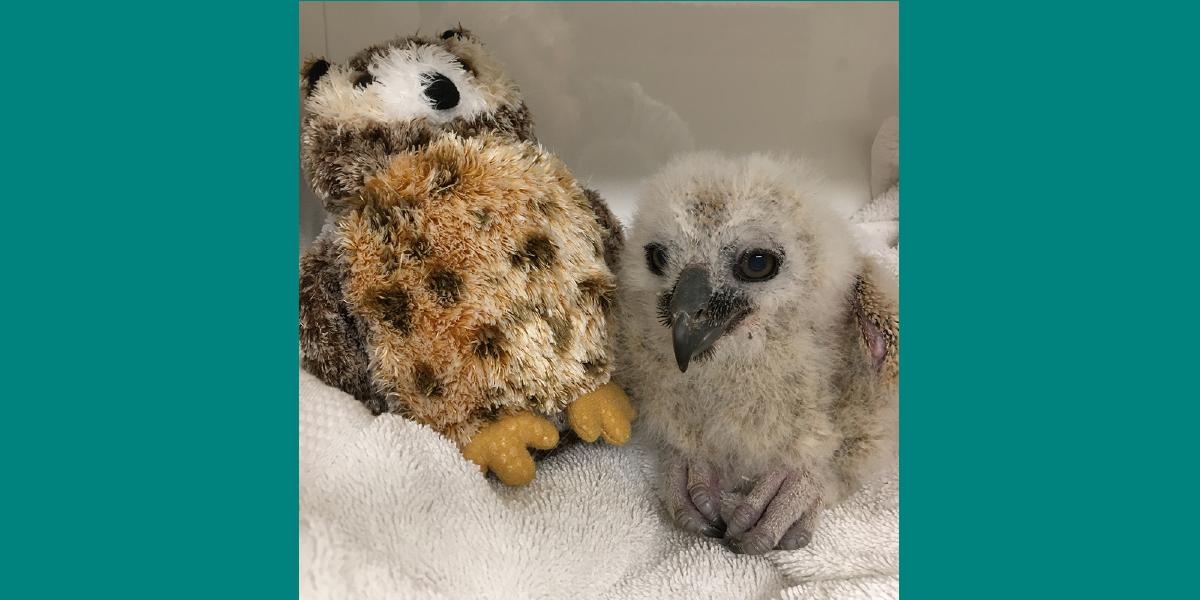Down, but not out
The Raptor Center returns a fallen juvenile great horned owl to its nest

The Raptor Center returns a fallen juvenile great horned owl to its nest
At The Raptor Center (TRC), the first baby to come into the clinic needing care was a 2.5-week-old great horned owlet. This was hardly a surprise to TRC staff, who are accustomed to seeing juvenile great horned owls, early and often, in the clinic.
Great horned owls are opportunistic nesters, which means they do not build their own nests — they adopt nests, usually made by red-tailed hawks, crows, or squirrels. They also do not work to maintain the nests they adopt, so by the time their clutch of eggs hatch, the nest may be a little worse for the wear due to harsh winter weather.
There is estimated to be roughly one great horned owl nest every two miles in the Twin Cities.
Lori Arent, MS
“We often see young great horned owls in the clinic,” says Lori Arent, MS, assistant director at TRC, “both because great horned owls are the most common large owl found in the Twin Cities area, and because their young frequently fall from their haphazard nests after hatching in the spring,” Arent says. “There is estimated to be roughly one great horned owl nest every two miles in the Twin Cities.”
On March 12, this particular little great horn tumbled 40 feet from its pine tree nest in Bloomington. Remarkably, it was uninjured upon arrival to TRC’s clinic, so plans were made to return it to its family. Corryn Vitek, a senior veterinary technician at TRC, transported the youngster and met up with one of TRC’s volunteer tree climbers.
As the pair peered up to the nest, not only did they see one of the adults looking down but also a second owlet laying precariously on a loose bed of sticks. Before their very eyes, it too plummeted to the ground.
Repairing the nest was a noisy affair, as the adult clacked and hooted its displeasure from an adjacent tree. It didn’t take long though, and the youngsters were lifted back up and the family reunited.
Says Arent: “Mission accomplished!”
Established in 1974 as part of the University of Minnesota College of Veterinary Medicine, The Raptor Center (TRC) sees around 1,000 sick and injured raptors each year in the clinic, while helping to identify emerging environmental issues related to raptor health and populations. All spring and into the summertime, TRC is busy returning juvenile raptors to health, and their rightful homes. If you are interested in supporting their crucial work, you can give online or contact Ellen Orndorf, TRC’s development officer, at eorndorf@umn.edu or 612-624-8457.